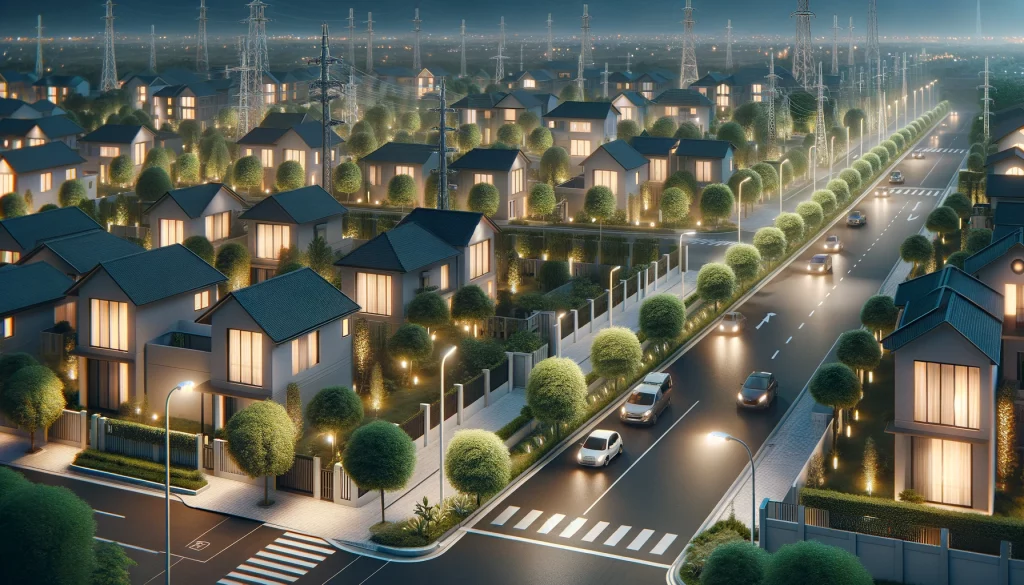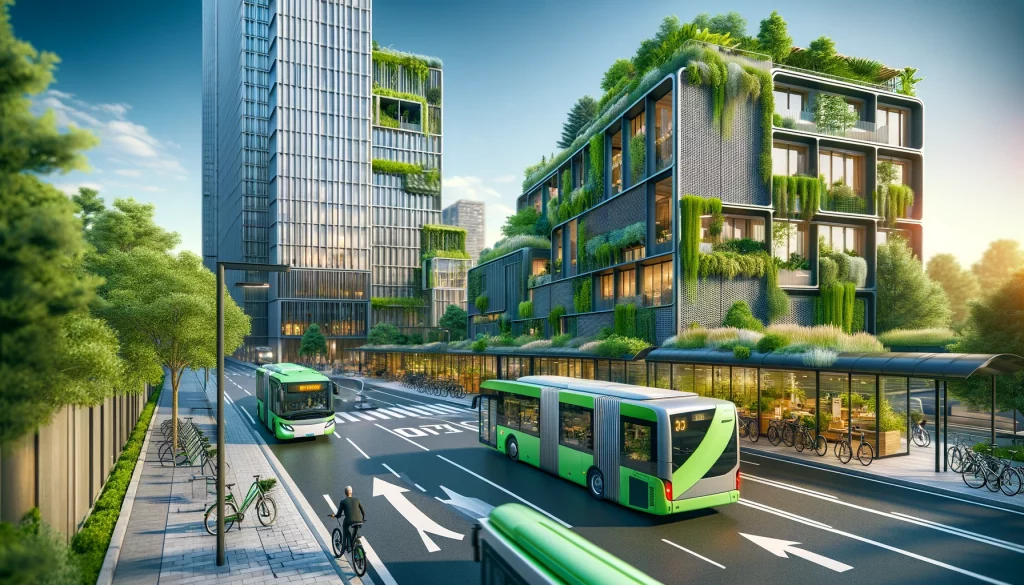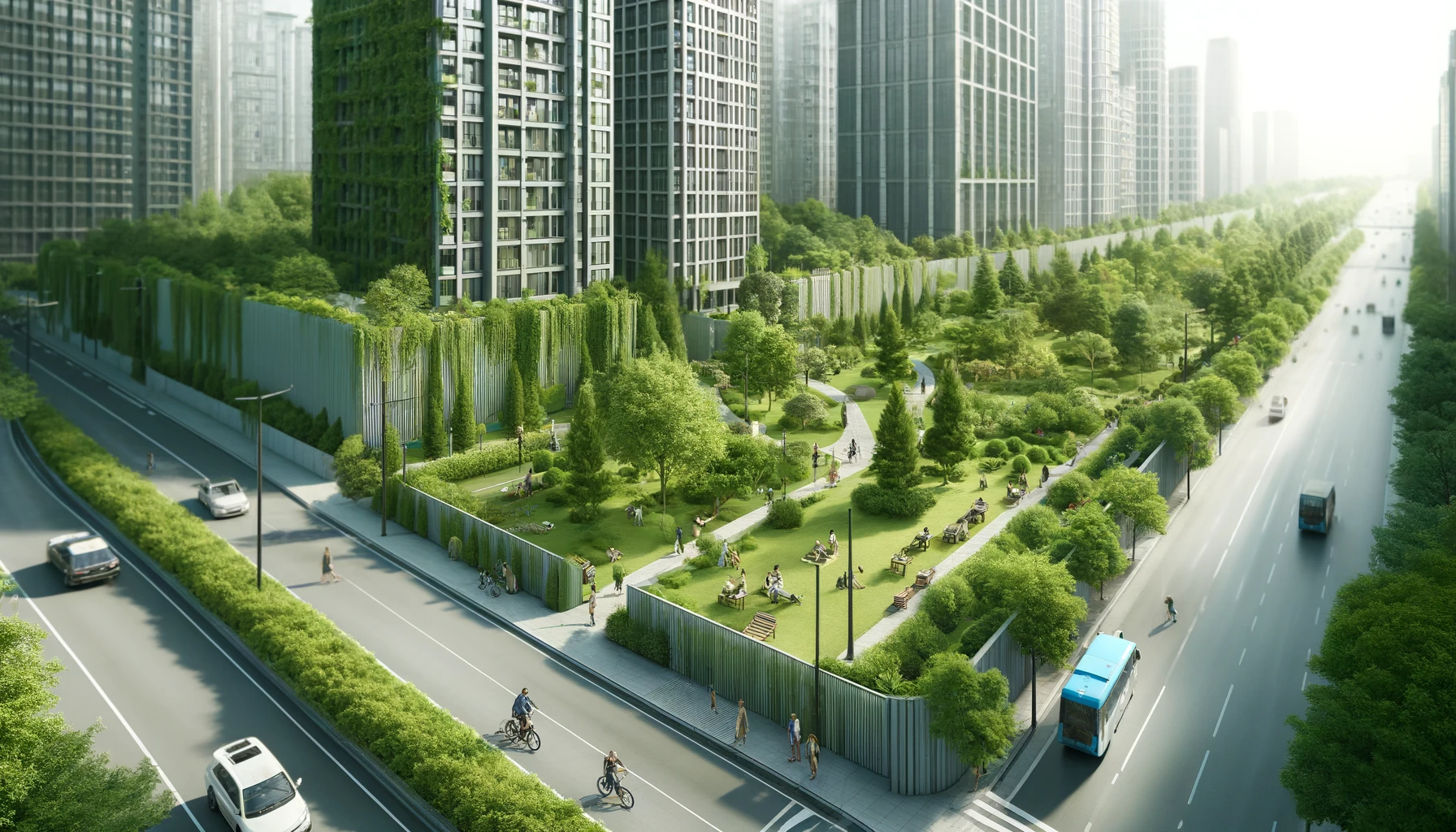Introduction
In the bustling environments of modern cities, noise pollution has become an increasingly pervasive issue. This form of pollution, characterized by unwanted or harmful sounds, can significantly impact the health and well-being of urban residents. From the incessant hum of traffic and construction to the blaring sirens and industrial activities, noise pollution disrupts daily life and poses serious health risks. Addressing this issue is crucial for creating healthier, more livable urban spaces. This article delves into effective strategies for reducing urban noise pollution, aiming to transform our cities into quieter, more peaceful environments.
II. Understanding Noise Pollution
Definition and Sources of Noise Pollution
Noise pollution is defined as the presence of unwanted or harmful sounds that disrupt the natural balance of the environment. In urban areas, the primary sources of noise pollution include traffic, construction activities, industrial operations, and social events. Traffic noise, in particular, is a significant contributor, emanating from cars, motorcycles, buses, and trains. Other notable sources include emergency sirens, public sanitation activities, and recreational events like concerts and sports gatherings (Earth Journalism Network) (Strong Towns).
Examples of Noise Pollution in Urban Areas
In cities, noise pollution manifests in various ways. Traffic noise dominates during rush hours, with the constant flow of vehicles creating a pervasive hum. Construction sites add to the cacophony with heavy machinery and power tools. Industrial areas contribute through the operation of large equipment and the movement of goods. Even residential areas are not immune, with loud music, parties, and domestic appliances contributing to the overall noise levels (Earth Journalism Network) (ISGLOBAL).
Health and Environmental Impacts of Noise Pollution
The effects of noise pollution on health are profound and well-documented. Chronic exposure to high noise levels can lead to cardiovascular diseases, hearing loss, sleep disturbances, and stress-related ailments. For children, noise pollution can impair cognitive development, affecting memory, attention, and reading skills. Environmentally, noise pollution disrupts wildlife, affecting their communication, mating rituals, and navigation. Birds, for example, may change their singing patterns to compete with urban noise, which can affect their reproductive success (Strong Towns) (UNEP – UN Environment Programme) (Thomson Reuters Foundation News).
III. Current State of Urban Noise Pollution
Statistics and Data on Noise Levels in Cities
Recent studies indicate that noise levels in many urban areas regularly exceed safe limits set by health organizations. For instance, average noise levels in some parts of New York City can reach 85 decibels (dB) during peak hours, well above the 55 dB threshold recommended by the World Health Organization (WHO) for outdoor residential areas. Similarly, traffic noise in cities like Tokyo and Mumbai often exceeds 90 dB, contributing to widespread public health concerns (Earth Journalism Network) (UNEP – UN Environment Programme).
Case Studies of Particularly Noisy Cities
Cities such as New York, Tokyo, and Mumbai are well-known for their high noise levels. New York, for example, faces constant noise from traffic, construction, and nightlife. In Tokyo, the density of traffic and frequent construction projects create a persistent background noise. Mumbai’s rapid urbanization and high population density contribute to severe noise pollution, impacting both health and quality of life for its residents (Strong Towns) (ISGLOBAL).
Public Awareness and Perception of Noise Pollution
Public awareness of noise pollution varies significantly across different regions. In Europe, there is a higher level of awareness and stricter regulations to combat noise pollution. The European Union’s Environmental Noise Directive requires member states to map noise exposure and develop action plans. In contrast, awareness and regulation in other parts of the world, such as the United States and India, are less comprehensive. Despite this, there is a growing recognition of the need to address noise pollution globally (Thomson Reuters Foundation News).
IV. Effective Strategies for Reducing Noise Pollution
Urban Planning and Design
Incorporating Green Spaces and Vegetation One of the most effective strategies for reducing urban noise pollution is the incorporation of green spaces and vegetation. Trees and shrubs act as natural sound barriers, absorbing and deflecting noise. Green roofs and walls, urban parks, and tree-lined streets not only reduce noise levels but also enhance the aesthetic appeal of urban environments. For example, the city of Berlin has implemented extensive green spaces, which have proven effective in reducing noise pollution while also improving air quality and providing recreational areas for residents (Strong Towns) (ISGLOBAL).
Building Design and Materials for Noise Insulation Innovative architectural designs and materials can significantly mitigate noise pollution. Buildings constructed with soundproofing materials, such as double-glazed windows, thick walls, and acoustic tiles, can help keep indoor spaces quiet. Additionally, thoughtful building placement and design, such as creating buffer zones between residential areas and noisy industrial sites, can further reduce noise intrusion. For instance, many modern high-rise buildings in Singapore are designed with noise-reducing features to protect residents from traffic and construction noise (UNEP – UN Environment Programme) (Thomson Reuters Foundation News).

Transportation Management
Promoting Public Transport and Non-Motorized Transport Encouraging the use of public transportation, cycling, and walking can drastically reduce traffic noise. Cities like Copenhagen and Amsterdam have successfully promoted cycling as a primary mode of transport, resulting in lower noise levels and healthier urban environments. Implementing dedicated bike lanes and pedestrian zones can further support this shift. Additionally, transitioning to electric buses and trains, which are quieter than their diesel counterparts, can contribute significantly to noise reduction (Strong Towns) (Thomson Reuters Foundation News).
Implementing Noise Barriers and Quiet Road Surfaces Physical barriers, such as sound walls and earth berms, can effectively block and reduce traffic noise. These barriers are particularly useful along highways and busy roads. Furthermore, using quieter road surfaces, such as rubberized asphalt, can reduce the noise generated by tire-road interaction. Studies have shown that these surfaces can lower noise levels by several decibels, making a noticeable difference in urban noise pollution (Earth Journalism Network) (ISGLOBAL).
Regulatory and Policy Measures
Noise Regulations and Enforcement Enforcing strict noise regulations is crucial for managing urban noise pollution. Policies that set maximum allowable noise levels for different zones (residential, commercial, industrial) and times of day can help control noise. In Europe, the Environmental Noise Directive requires member states to develop noise maps and action plans to manage noise pollution. Such regulations, combined with regular monitoring and enforcement, can ensure compliance and reduce noise levels (Strong Towns) (UNEP – UN Environment Programme).
Incentives for Noise Reduction Technologies Governments can provide incentives for the adoption of noise reduction technologies. These could include tax breaks or grants for businesses and homeowners who invest in soundproofing measures, such as double-glazed windows or acoustic insulation. Additionally, promoting the use of quieter machinery and vehicles through subsidies or regulations can further reduce noise pollution. For example, cities like London and Paris offer incentives for electric vehicle purchases, which helps lower both noise and air pollution (Earth Journalism Network) (ISGLOBAL) (Thomson Reuters Foundation News).
V. Technological Innovations
Noise-Canceling Technologies
Advancements in noise-canceling technologies have opened new avenues for combating urban noise pollution. Active noise control (ANC) systems, which generate sound waves that counteract unwanted noise, are becoming increasingly popular in various applications. For instance, noise-canceling headphones are widely used in personal settings, while larger-scale ANC systems are being developed for use in buildings and public spaces. These technologies can significantly reduce the impact of noise pollution, creating quieter environments in urban areas (Strong Towns) (UNEP – UN Environment Programme).

Soundproofing Materials and Methods
Modern construction techniques and materials designed for soundproofing can play a vital role in reducing noise pollution. Innovations such as acoustic panels, double-glazed windows, and sound-absorbing walls can help minimize the transmission of noise between indoor and outdoor environments. Additionally, materials like mass-loaded vinyl (MLV) and acoustic foam are increasingly being used in residential and commercial buildings to enhance sound insulation (Earth Journalism Network) (Thomson Reuters Foundation News).
Smart City Technologies for Monitoring and Managing Noise
The integration of smart city technologies provides new ways to monitor and manage noise pollution. Sensors and IoT (Internet of Things) devices can be deployed across urban areas to collect real-time data on noise levels. This data can be analyzed to identify noise hotspots and inform the development of targeted noise reduction strategies. Cities like Barcelona and Singapore have implemented smart noise monitoring systems, which help in proactive noise management and policy enforcement (UNEP – UN Environment Programme) (ISGLOBAL).
VI. Community Involvement and Education
Role of Community in Noise Reduction
Community involvement is crucial in the fight against noise pollution. Residents can play an active role by participating in noise reduction initiatives, such as tree planting drives and advocating for quieter neighborhoods. Community feedback can also be valuable in identifying noise pollution sources and developing effective solutions. Engaging local communities in noise mapping and monitoring projects can foster a sense of ownership and responsibility towards maintaining a quieter environment (Strong Towns) (Thomson Reuters Foundation News).
Educational Campaigns and Public Engagement
Raising public awareness about the impacts of noise pollution and the importance of noise reduction can drive community action and support for regulatory measures. Educational campaigns can be conducted through schools, community centers, and social media platforms to inform residents about simple steps they can take to reduce noise, such as using quieter appliances and supporting noise reduction policies. Successful public engagement campaigns can lead to a more informed and proactive community (Earth Journalism Network) (UNEP – UN Environment Programme).
Success Stories of Community-Led Noise Reduction Initiatives
Several communities around the world have successfully implemented noise reduction initiatives with significant results. For example, the city of Zurich has launched the “Leise Stadt” (Quiet City) program, which encourages residents to use quieter modes of transport and report noise disturbances. Similarly, in the United States, the “Quiet Communities” initiative focuses on reducing noise from leaf blowers and other lawn equipment through community advocacy and education (Strong Towns) (ISGLOBAL).
VII. Future Prospects and Challenges
Emerging Trends in Noise Pollution Management
As urban areas continue to grow, innovative approaches to noise pollution management are emerging. One promising trend is the use of “quiet pavement” technologies, which involve the development of road surfaces designed to reduce tire noise. Another emerging trend is the increased adoption of electric vehicles, which produce significantly less noise compared to traditional gasoline-powered vehicles. Moreover, cities are experimenting with urban design concepts that prioritize quiet zones, incorporating natural barriers and green infrastructure to buffer noise (Strong Towns) (ISGLOBAL) (Thomson Reuters Foundation News).
Potential Challenges in Implementing Noise Reduction Strategies
Despite the advancements in noise reduction technologies and strategies, several challenges remain. One significant challenge is the high cost associated with implementing noise reduction measures, such as installing sound barriers or retrofitting buildings with soundproof materials. Additionally, there is often resistance from industries and businesses that may be affected by stricter noise regulations. Ensuring public compliance and engagement in noise reduction initiatives can also be challenging, particularly in densely populated urban areas where noise is a part of daily life (Earth Journalism Network) (UNEP – UN Environment Programme).
Vision for Quieter, Healthier Urban Environments
The vision for the future is to create urban environments that are not only quieter but also healthier and more sustainable. This involves a multi-faceted approach that integrates technological innovations, effective policy measures, community involvement, and public education. By fostering collaboration between government agencies, businesses, and communities, cities can develop comprehensive noise management plans that address the root causes of noise pollution and promote a higher quality of life for all residents (Strong Towns) (ISGLOBAL).
VIII. Conclusion
In conclusion, noise pollution in urban areas is a pressing issue that affects both human health and the environment. Through a combination of innovative technologies, effective urban planning, and active community involvement, it is possible to significantly reduce noise levels and create quieter, more livable cities. Strategies such as incorporating green spaces, using soundproof materials, promoting public transportation, and implementing stringent noise regulations are essential steps toward achieving this goal. As cities continue to evolve, it is crucial to prioritize noise reduction efforts to ensure a healthier, more sustainable future for urban residents.
FAQs about Urban Noise Pollution
1. What are the most common sources of urban noise pollution?
Urban noise pollution primarily stems from traffic, including cars, motorcycles, buses, and trains. Construction activities, industrial operations, and social events also contribute significantly. Additionally, noise from public sanitation activities, emergency sirens, and recreational events like concerts and sports gatherings are common sources of urban noise pollution (Earth Journalism Network) (Strong Towns) (UNEP – UN Environment Programme).
2. How does noise pollution affect human health?
Noise pollution can have severe health impacts, including cardiovascular diseases, hearing loss, sleep disturbances, and increased stress levels. Chronic exposure to high noise levels can also lead to cognitive impairments in children, affecting their memory, attention, and reading abilities. Furthermore, noise pollution can disrupt sleep patterns, leading to fatigue and decreased overall well-being (Strong Towns) (UNEP – UN Environment Programme) (Thomson Reuters Foundation News).
3. What are some effective noise reduction strategies for urban areas?
Effective noise reduction strategies include:
- Urban Planning and Design: Incorporating green spaces and soundproof building materials.
- Transportation Management: Promoting public transport, cycling, and walking; implementing noise barriers and quiet road surfaces.
- Regulatory Measures: Enforcing noise regulations and providing incentives for adopting noise reduction technologies (Strong Towns) (ISGLOBAL) (Thomson Reuters Foundation News).
4. How can communities get involved in reducing noise pollution?
Communities can play a crucial role by participating in noise reduction initiatives, such as tree planting drives and advocating for quieter neighborhoods. Public engagement campaigns can raise awareness about the impacts of noise pollution and promote community-led monitoring and reporting of noise disturbances. Success stories from cities like Zurich and community initiatives like “Quiet Communities” in the US highlight the positive impact of community involvement in noise reduction (Strong Towns) (ISGLOBAL).
